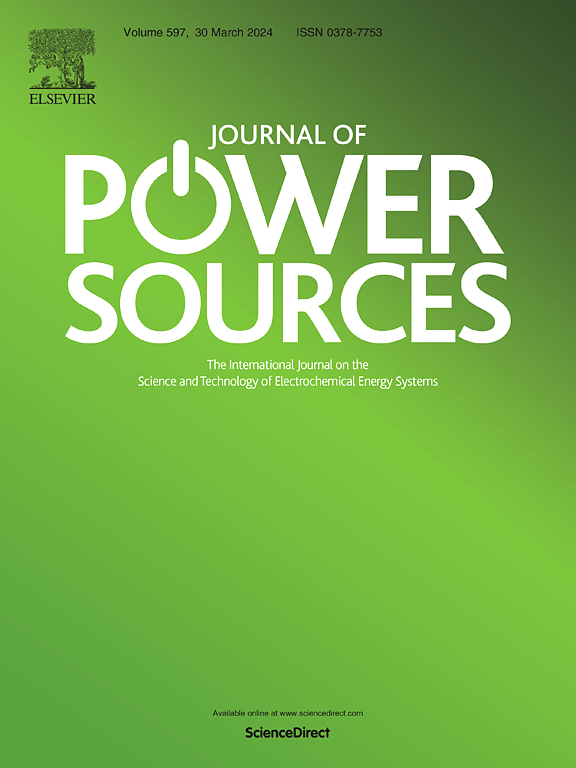Facile synthesis of bimetallic Ag-Fe core-shell nanoparticles for the selective and efficient dehydrogenation of formic acid
IF 8.1
2区 工程技术
Q1 CHEMISTRY, PHYSICAL
引用次数: 0
Abstract
Hydrogen energy, being an earth-abundant, renewable, and environment-friendly energy source, has attracted a great deal of attention as a potential alternative to fossil fuels and other conventional, energy production procedures. However, the fabrication of highly selective, durable, and low-cost heterogeneous catalysts for hydrogen production from formic acid (FA) and other hydrogen storage materials remains a key challenge to utilize hydrogen-based energy effectively. Here, we report a facile one-pot fabrication of core@shell Ag-Fe bi-metallic nanoparticles stabilized by hydroxyethyl cellulose (HEC). As prepared catalyst was subjected to UV–Vis, FTIR, XRD, SEM, HR-TEM, EDX, BET, DLS, and ZP characterizations. The Ag10-Fe90-HEC exhibited remarkable efficiency and FA dehydrogenation was accomplished in 3.5 min with >99 % selectivity and a TOF value of 3088.32 h−1 at pH 3.5, FA/SF 1/3, and 343 K temperature was achieved. Moreover, the slightest decrease in activity after six successive catalytic cycles depicts its robust stability. This remarkable efficiency of the Ag10-Fe90-HEC catalyst was attributed to high surface area, strong synergistic effects produced from the combination of two metals, and electron transfer between two metals incorporated in the catalyst. The present catalytic system provides an efficient method for fabricating a highly selective low-cost heterogenous catalyst for CO-free hydrogen release from FA.

氢能是一种地球上丰富的可再生环保能源,作为化石燃料和其他传统能源生产工艺的潜在替代品,已引起人们的广泛关注。然而,从甲酸(FA)和其他储氢材料中制取氢气的高选择性、耐久性和低成本的异相催化剂,仍然是有效利用氢基能源的关键挑战。在此,我们报告了用羟乙基纤维素(HEC)稳定的核@壳银铁双金属纳米粒子的简单一锅制备方法。对制备的催化剂进行了紫外可见光、傅立叶变换红外光谱、XRD、扫描电镜、HR-TEM、EDX、BET、DLS 和 ZP 表征。Ag10-Fe90-HEC 表现出卓越的效率,在 pH 值为 3.5、FA/SF 为 1/3、温度为 343 K 的条件下,FA 脱氢反应在 3.5 分钟内完成,选择性为 99%,TOF 值为 3088.32 h-1。此外,在连续六个催化循环后,活性的下降幅度微乎其微,这说明该催化剂具有很强的稳定性。Ag10-Fe90-HEC 催化剂的这一显著效率归功于高表面积、两种金属结合产生的强大协同效应以及催化剂中两种金属之间的电子转移。本催化系统为制造一种高选择性、低成本的异源催化剂提供了有效方法,可用于从 FA 中释放无 CO 的氢气。
本文章由计算机程序翻译,如有差异,请以英文原文为准。
求助全文
约1分钟内获得全文
求助全文
来源期刊

Journal of Power Sources
工程技术-电化学
CiteScore
16.40
自引率
6.50%
发文量
1249
审稿时长
36 days
期刊介绍:
The Journal of Power Sources is a publication catering to researchers and technologists interested in various aspects of the science, technology, and applications of electrochemical power sources. It covers original research and reviews on primary and secondary batteries, fuel cells, supercapacitors, and photo-electrochemical cells.
Topics considered include the research, development and applications of nanomaterials and novel componentry for these devices. Examples of applications of these electrochemical power sources include:
• Portable electronics
• Electric and Hybrid Electric Vehicles
• Uninterruptible Power Supply (UPS) systems
• Storage of renewable energy
• Satellites and deep space probes
• Boats and ships, drones and aircrafts
• Wearable energy storage systems
 求助内容:
求助内容: 应助结果提醒方式:
应助结果提醒方式:


